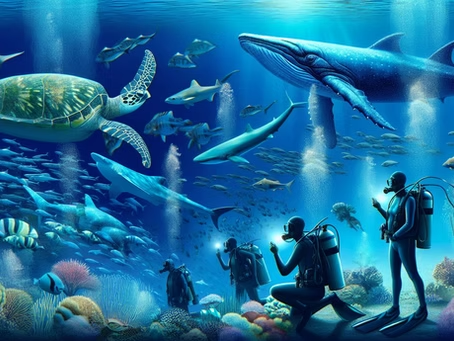Conserving Endangered Marine Species: Efforts to Save Threatened Wildlife
The ocean is a vast and mysterious world, home to countless species that keep ecosystems balanced. Yet many of these creatures are under threat from overfishing, climate change, and pollution. Protecting endangered marine species requires a combination of global collaboration, community engagement, and individual action. The future of our oceans depends on how we respond today.
The Plight of Marine Life
Marine ecosystems are unraveling under pressure from human activity. Overfishing depletes fish stocks faster than they can recover, coral reefs bleach and collapse in warming seas, and plastic pollution harms wildlife from turtles to whales. These losses are not isolated—they disrupt entire food webs and weaken ocean resilience.
- Overfishing reduces populations and destabilizes ecosystems.
- Coral reef decline threatens biodiversity and coastal protection.
- Plastic waste entangles and poisons marine animals.
Keystone and indicator species, such as sea otters and seabirds, highlight the urgency of conservation. Their decline signals wider ecosystem collapse.
Climate Change and Its Impact
Rising temperatures, acidification, and shifting currents are transforming habitats. Conservationists are responding with restoration projects, wildlife corridors, and strategies to preserve genetic diversity. Reducing greenhouse gas emissions remains vital to safeguard ocean ecosystems for future generations.
Everyday Actions for Conservation
Sustainable Seafood
Choosing certified sustainable seafood supports responsible fishing and ensures that marine populations can recover. Consumers hold real power through their purchasing decisions.
Reducing Plastic Waste
- Refuse single-use plastics like straws and bags.
- Reuse containers and recycle whenever possible.
- Join community cleanups to protect coastlines.
Supporting Marine Protected Areas
Marine Protected Areas (MPAs) serve as sanctuaries where ecosystems can recover. Advocating for their creation and enforcement strengthens biodiversity and local economies.
Conservation Efforts and Success Stories
While challenges remain, several species offer hope. Humpback whales rebounded after hunting bans, sea turtles show recovery where nesting sites are protected, and alligators once near extinction now thrive. These successes prove that targeted action works.
The Role of Organizations and Communities
Groups such as Oceana, WWF, and Sea Shepherd drive global conservation through research, advocacy, and direct protection. Volunteers and citizen scientists also play an important role by collecting data, raising awareness, and promoting policy change. Supporting these efforts—financially or through engagement—amplifies their impact.
Innovations in Conservation
- Smart nets and eco-friendly fishing gear reduce bycatch.
- Drones and satellites monitor illegal fishing and habitat destruction.
- Artificial reefs and sustainable aquaculture help restore marine environments.
Technology provides tools to address threats, but long-term success depends on responsible use and strong governance.
Conclusion
Marine species are vital to the health of our oceans and the stability of our planet. Protecting them requires cooperation at every level—from international treaties to individual choices. By reducing waste, supporting conservation efforts, and promoting innovation, humanity can safeguard the oceans and ensure that endangered species not only survive but thrive. The future of marine life depends on the actions we take now.

